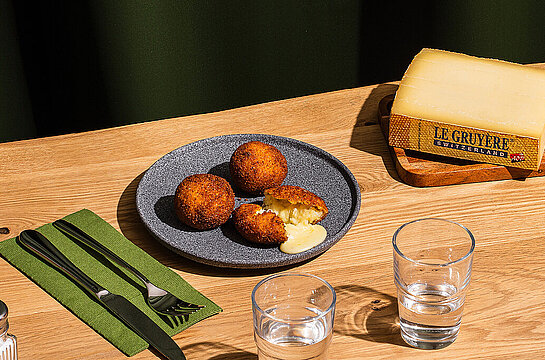Le Gruyère AOP beetroot carpaccio
- 10 min.
- 20 min.
- Starter
Did you know that beetroot is related to sugar beet and chard? It belongs to the cultivated form of the common beet, hence the name red beet, beet or the German name “Rande”. The beetroot originates from the Mediterranean area, probably from North Africa, and was brought to Central Europe by the Romans. Interestingly, the beetroot is a biennial herbaceous plant. In this case, in the first year the plant develops both a beet and a rosette of leaves. In the second year, a fleshy turnip develops, which usually arises from a thickening below the cotyledons. The rim can also have different colours, whether yellow or even red and white striped. The rim is versatile in the kitchen, whether cooked or uncooked, pickled or even in desserts: indeed, there are no limits to its uses. It works as a salad for appetizers or a vegetable garnish for game, or in a traditional combination with horseradish components.
Stéphanie Zosso

Ingredients for
Note
Attention change of number of people
Beetroot carpaccio
-
1200 gof cooked beets
-
100 gfinely chopped shallots
-
100 golive oil
-
1 sheetsof laurel
-
1 pinchof salt
-
1 pinchof pepper
-
50 gLe Gruyère d'Alpage AOP
-
2 cloves
-
40 mlwhite balsamic vinegar
Preparation
Beetroot carpaccio
- Peel cooked beetroot and slice thinly.
- Dice shallots and sauté in a little oil, then add bay leaf and cloves.
- Deglaze with the Mazetti vinegar, reduce by half and season with salt and pepper.
- Mix with the olive oil and pour over the slices of beetroot while still warm, leave to marinate.
- Arrange and finally top with flaked Le Gruyère AOP Alpage and enjoy.




